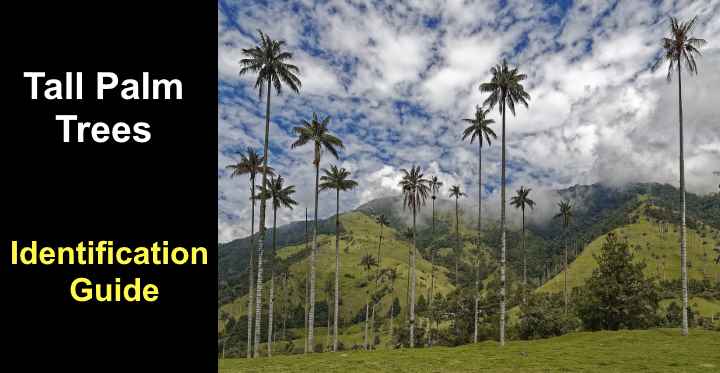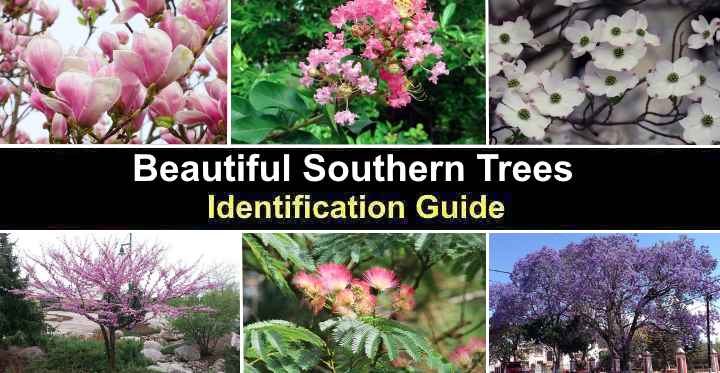Category Archives: Trees
Tall Palm Trees (With Pictures) – Identification Guide
Southern Trees (With Pictures) – Identification Guide
Small Evergreen Trees (With Pictures) – Identification Guide
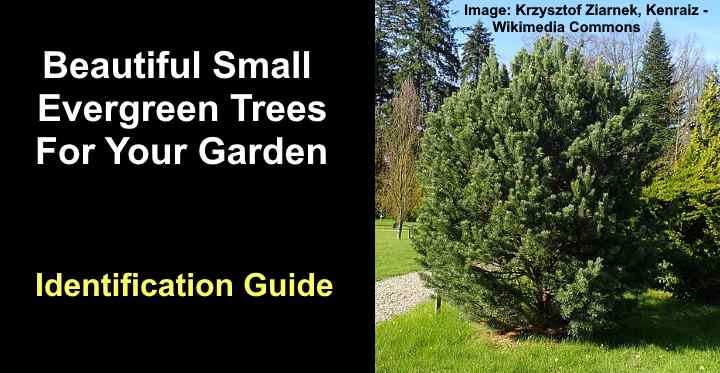
Small evergreen trees are perfect for adding year-round color and texture to your garden landscape without taking up too much space. Evergreen trees that don’t grow too tall are ideal for compact gardens, front yards, or accent plants in larger landscapes. With their evergreen foliage, small conifers and other evergreen trees provide a constant presence in your garden. Some evergreen trees under 10 feet tall also have fragrant flowers or colorful fruit.
32 Maple Trees: Types, Leaves, Bark – Identification Guide (Pictures)
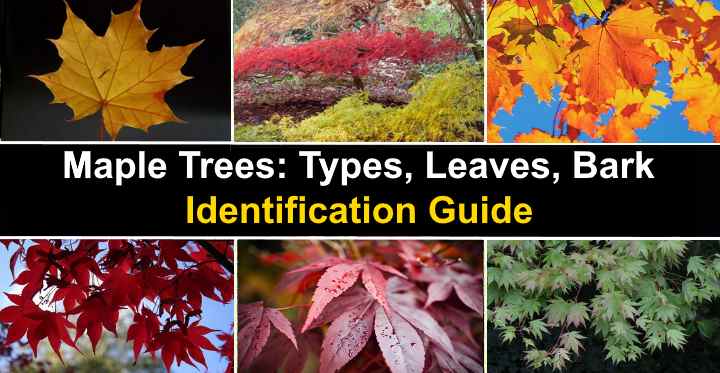
Maple trees are beautiful deciduous shade trees with leafy foliage. Maple trees have dark brown furrowed bark, small, winged fruits, and narrow reddish-brown twigs. Maple trees commonly have green lobed leaves that change their color to red, yellow, orange, and dark burgundy in the fall. The most identifiable feature of maple trees is their lobed leaves. Maples trees grow up to 150 ft. (45 m) tall.
Types of Pine Trees in Texas (With Pictures) – Identification Guide
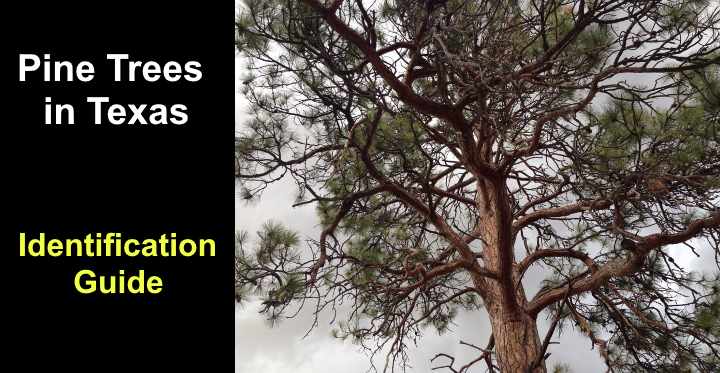
Texas is home to several species of native pine trees. From the common loblolly pine and shortleaf pine to the dwarf mugo pine, these majestic coniferous trees thrive in Texas. Although pine trees are cold-hardy conifers, many species of these evergreen trees thrive in the hot, dry, and sometimes humid climate of Texas.
Florida Trees With Yellow Flowers – Identification Guide
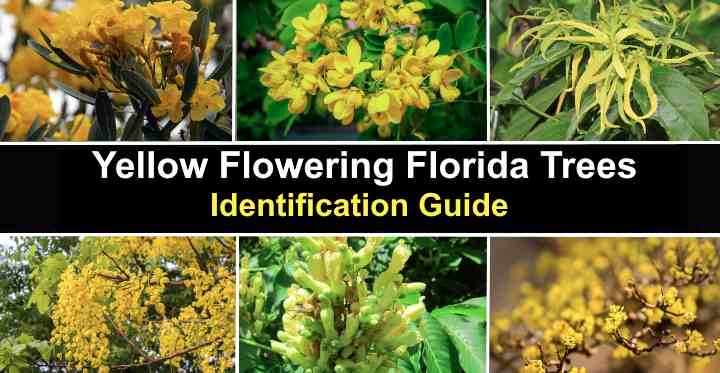
Trees with yellow flowers are a common sight in Florida landscapes. The most popular yellow-flowering trees in the Sunshine State are trumpet trees (Tabebuia or Handroanthus) and cassia trees. However, many other varieties of deciduous and evergreen trees grace Florida’s tropical and subtropical outdoor spaces with spectacular bright yellow floral displays.
California Oak Trees (With Pictures) – Identification Guide
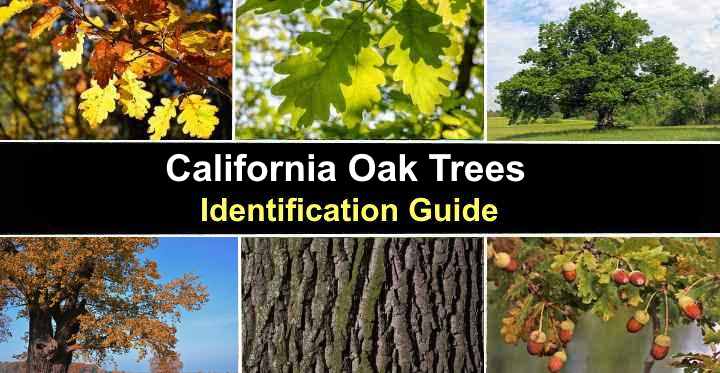
Oak trees are an integral part of California’s ecosystem and landscape. These majestic hardwood, broadleaf trees provide shade, beauty, and habitat for wildlife in the Bear Flag State. From native California oak trees like the California Live Oak, Black Oak, Canyon Oak, and Channel Island Oak to naturalized oak trees, these deciduous trees are common throughout the western United States.
Small Florida Palm Trees (With Pictures) – Identification Guide
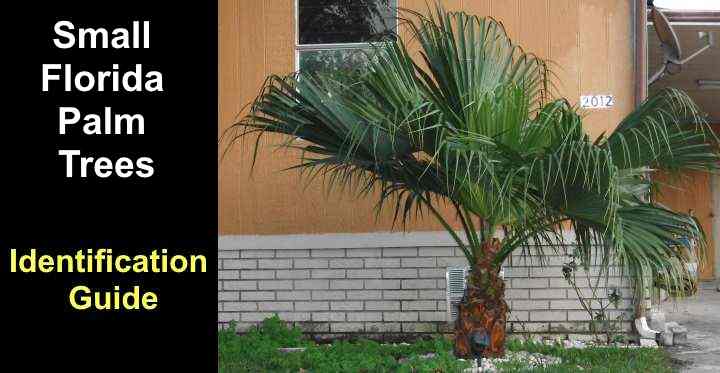
Small palm trees in Florida are the perfect solution to add a tropical twist to a southern garden landscape. Several species of dwarf palms don’t grow more than 20 feet (6 m). Popular small Florida palms include the Florida thatch palm, bottle palm, dwarf sugar palm, and Everglades palm. Additionally, many native low-growing Florida palms are easy to care for and thrive in the challenging climate of the Sunshine State.
Trees With Spiky Seed Balls (With Pictures) – Identification Guide
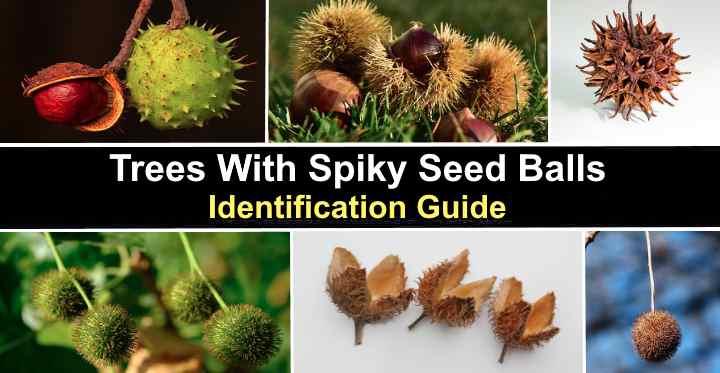
Trees with spiky seed balls are generally easy to identify. In late summer and fall, trees like buckeye, chestnut, and sweet gums produce spherical round seed balls covered with prickly spikes. In some cases, the spiked seed balls don’t do any harm. However, round seed pods with sharp spikes can be painful if you step on them barefoot.
Trees With Long Seed Pods – Identification Guide (With Pictures)

Trees with long, slender seed pods are easily identified in woodlands and parks. The distinctive bean-like pods may look like a string of pearls, long flattened brown cases, or slender cylindrical seed pods measuring up to 24” (60 cm) long. Many of these trees with long seed pods are in the bean family Fabaceae and have similar seed cases containing several round or oval seeds.

